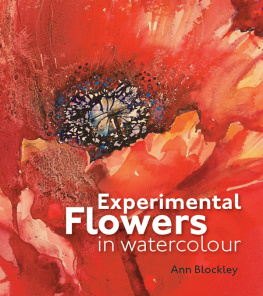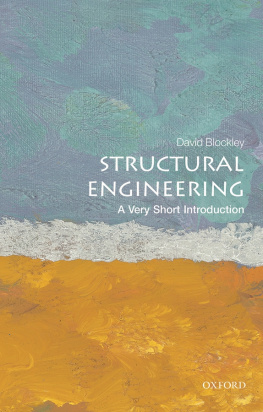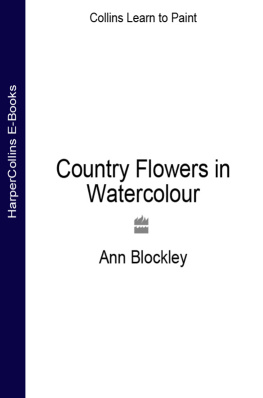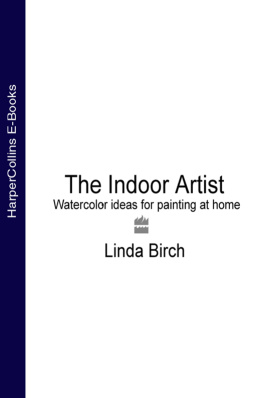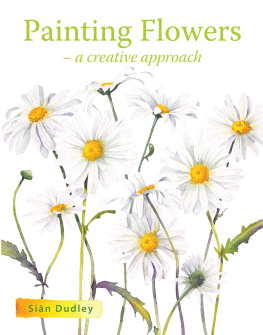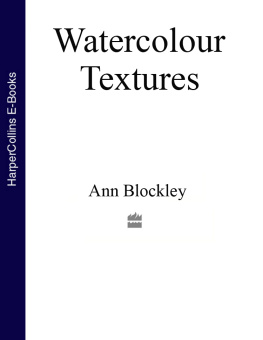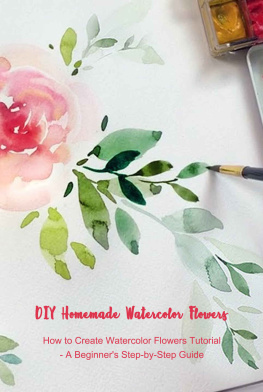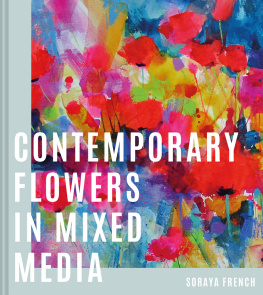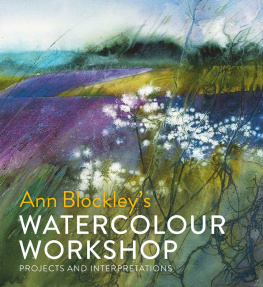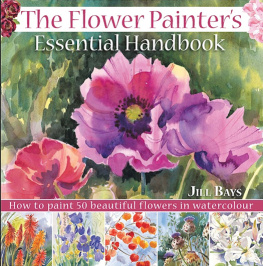More Great Titles from Batsford
tap to read more
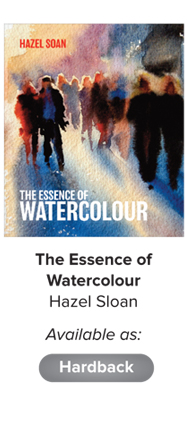
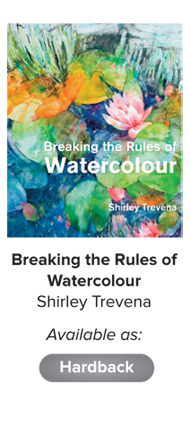




Blowing in the Wind
55 55.5cm (21 21in)
Introduction
With their incredible variety of colour, form and pattern, flowers make wonderful subjects. My aim in this book is to find creative and up-to-date ways to describe this popular subject matter. I look at the abstract qualities of flowers and interpret these in painterly experiments that stretch the boundaries of watercolour beyond its traditional image. I also hope to encourage and inspire you, through my personal creative journey, to discover your own expressive style, exploring the importance of moving on with your work and developing as an artist.
Experimental flowers in watercolour
When I embarked on this book I had not planned a title, although I knew that it would involve flowers and watercolour. I decided simply to begin painting and see what developed. I soon realized that I was not content just repeating ideas that I had used before. Being an artist of integrity is an evolutionary process that involves constantly reassessing your work. Although I had my own idiosyncratic style, I needed a change and wanted to try painting in a more contemporary way. Even if I ultimately reverted to my usual methods, I felt that my work would be strengthened and refreshed by the challenge.
Like many artists, I am often beset by self-doubt and I knew that this journey might be a struggle. I was not sure how to find a new direction so I decided to spend a whole floral year experimenting with watercolour, flowers and ideas. My artistic journey became the underlying theme of the book and the title, Experimental Flowers in Watercolour, thus emerged.
My experiments combined familiar watercolour techniques with mixed media, different surfaces and collage. I also wanted to push boundaries in other directions, not just with the medium but also by edging away from painting only traditional representations and by finding ways to be more thought-provoking. I therefore explored ideas that would help me to look at subjects in a more progressive, imaginative and abstract way.

Primroses and Hellebores
27 30cm (10 12in)
I began the year painting within my comfort zone, experimenting with watercolour in a fairly loose way but in a representational style. This painting is a typical example. There is nothing wrong with it, but I can do this sort of work without any effort and I needed a change and a challenge, if only for a while.
Through the seasons
As I began the project in spring, I decided to arrange the book by season to split it into manageable chapters. These largely follow the sequence in which the paintings were made, as subjects appeared in my garden and the surrounding countryside. Throughout the year I revisited old themes in order to evaluate my progress, but as the months passed, I added an increasing number of new techniques and concepts to my repertoire. By the end of the year I was bursting with fresh ideas and ready to start applying some of the discoveries I had made to other subjects.
I have written this book in the form of a personal artistic journey. My aim is that, by sharing with you my thoughts, frustrations and achievements, you will be encouraged to be adventurous with your own experiments and develop your work in new and exciting directions.

Frosted Rosehips (detail)
By winter I was experimenting with many new ideas in my work. Some of these were based on techniques such as collage, some were to do with the medium or surface that I used, and, most importantly, I was beginning to look at my subjects in a different way and express myself in a more quirky, up-to-date fashion. See page 112 for the full painting.

Paint experiments
Here is a selection of my watercolour experiments. They were made as preliminary colour sketches or loosening-up exercises before starting a painting, as I tried out different techniques to describe particular flower qualities.
Paint experiments
At the start of every painting session I loosen up with paint experiments. Playing with watercolour and surfaces to discover fabulous textures, edge values and marks is an endlessly fascinating process, which I view as being as important as making a finished picture to put in a frame. When faced with a blank piece of paper and a potential subject it is easy to feel confused by all the possible interpretations. To get creativity flowing, build confidence and firm up ideas it is essential to start by playing with paint.
Preliminary exercises
My first exercises may simply take the form of splodges or doodles to explore different colour combinations. Colour plays such an important role in a picture, especially when painting flowers, that it is absolutely essential to try out options before starting every painting. Within my explorations
I also experiment with marks or textures, using a variety of techniques. I look for methods and combinations of media that best describe the characteristic of the flower that I have seen or the interpretation that I have imagined. Before I progress to a more planned composition I aim
to loosen up both mentally and physically as this will be reflected in the painting. I describe my trial splodges as paint experiments, but although subsequent paintings may be more polished, they too are still part of an ongoing process of experimentation, not a finished product.

Watercolour and mixed media
In this book I look at ways of pushing the traditional boundaries of watercolour as well as enjoying the flowing translucency of the medium. The great thing about experimenting is that there are no rules. Ingredients such as salt or granulation medium can be added to watercolour to alter its character, and washes can be broken into textures by adding clingfilm or bubble wrap to the wet paint surface. Paint can be applied not only with brushes but also with a palette knife, toothbrush, roller or bits of card. Conventional rules about layering and allowing paint to dry can be ignored in favour of splashes, dribbles and backruns, manipulating paint, and rinsing away areas of colour with water.

